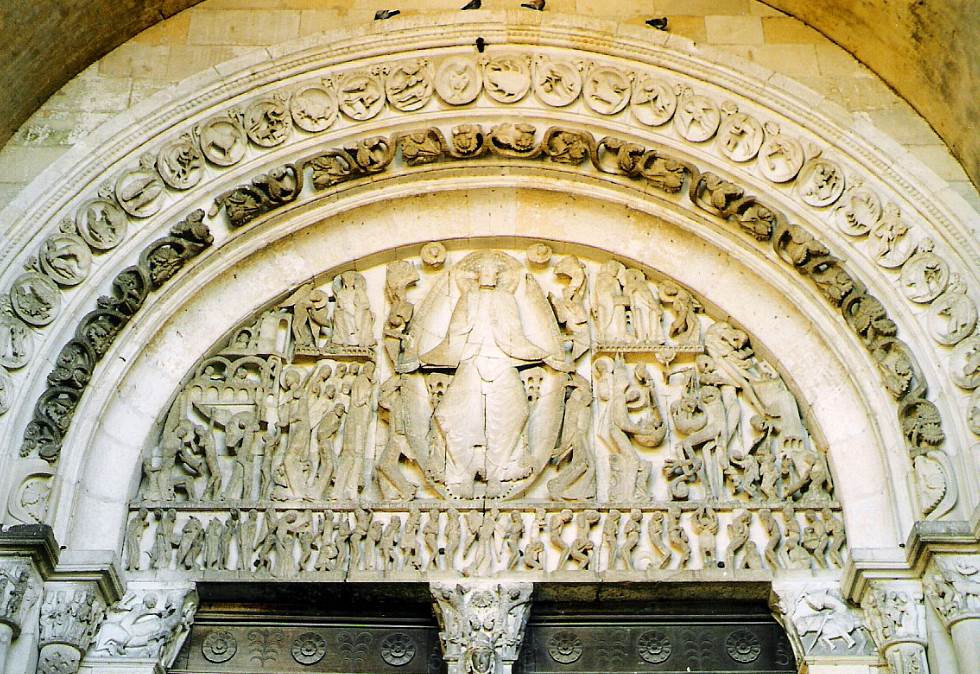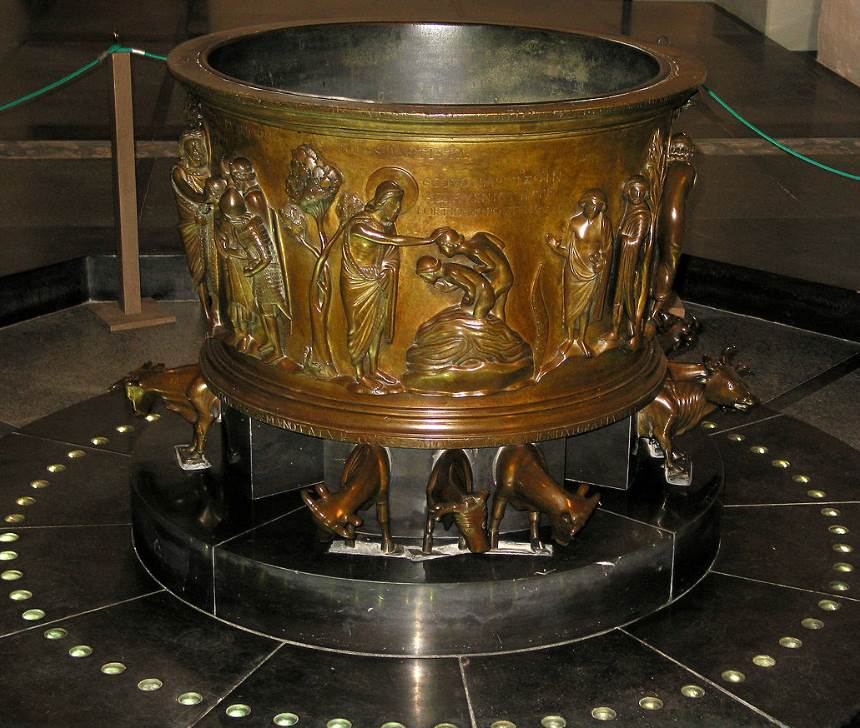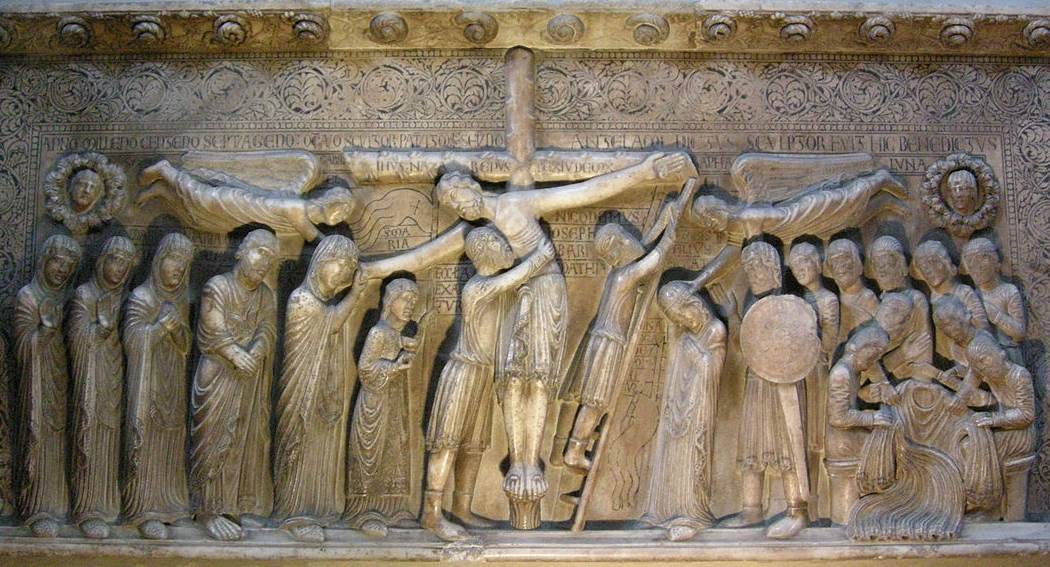Romanesque Art was the first art movement that could be classified as such in Western Europe following a period known as the Dark Ages.
It started around 1000 A.D. and it continued until it was replaced by the art produced by Gothic Artists in the 12th century. They gradually moved away from the influence of Byzantine art.
What’s remarkable is that this period in the history of art wasn’t referred to as such until the 19th century. The link with Romanesque architecture was made which continued the ideals of Roman architecture.
Romanesque Art and Architecture were closely intertwined during this period, especially when it comes to the decorations of religious buildings.
Other Romanesque artworks that were produced during the Romanesque era were illuminated manuscripts, wall paintings, tapestries, and stained glass windows.
Although the identity of several remains obscure, here is a list of some of the most famous Romanesque artists in history.
1. Master of Taüll
Master of Taüll is the name of an unidentified Romanesque who worked in modern-day Catalonia, a region in the northeast of Spain. He’s considered to be one of the most renowned Romanesque painters in history and arguably one of the most reputable in all of Europe in the 12th century.
He produced murals of very high quality for the time and his Magnum Opus is the decoration of the church of Sant Climent de Taüll. The apse painting that once decorated this church has been moved to the Museu Nacional d’Art de Catalunya in Barcelona and can be admired there.

2. Berlinghiero Berlinghieri
Berlinghiero (1175-1242) was an Italian artist who is also sometimes known as Berlinghiero Berlinghieri or Berlinghiero of Lucca. He was one of the greatest painters of the 13th century and his style can be defined as late-Romanesque with heavy influences from Byzantine art.
We don’t know the exact name of the artist but he signed his paintings with “Berlingerius me pinxit” which means “Berlingerius painted me.” He was the main artist in Lucca, a city in the Tuscany Region of Italy, and his two sons are known to have followed in his footsteps.

3. Master of Pedret
Master of Pedret is the name given to another presumably Spanish artist who lived and worked in Catalonia in the early twelfth century. Art historians have given him this name because of his most famous work, the apse of the church of San Quirze Pedret which is situated in the Pyrenees Mountains
The style in which he painted his works was inspired by the artists who were active in the Lombardy region of Italy at the time. He produced several other murals in churches in the region of which several were moved to the National Art Museum of Catalonia in Barcelona.

4. Gislebertus
Gislebertus (12th century) is the name of a man also known as Giselbertus or Ghiselbertus of Autun. He was a French artist who produced a large number of decorations for the Cathedral of Saint Lazare. This magnificent Romanesque church in Autun is located in the central part of Eastern France.
He created these decorations between 1120 and 1135 and doorways, tympanums, and capitals that are considered to be the ultimate masterpieces of Romanesque art. Before starting his work in Autun, he most probably sharpened his skills at the Abbey of Cluny.

5. Renier de Huy
Renier de Huy was a metalworker who was active in modern-day Belgium. He was one of the most renowned of all Mosan artists, people who produced art in the Meuse Valley of the Wallonia region of Belgium ad which also includes parts of modern-day France.
He is credited with creating one of the most famous artworks of the 12th century called the baptismal font at St Bartholomew’s Church in the city of Liège. This bronze baptismal font was created between 1107 and 1118 and is the epitome of Mosan Art.

6. Hugo d’Oignies
Hugo d’Oignies (before 1187-1240) was a member of the religious order of Oignies Abbey in modern-day Wallonia. He was both a renowned metalworker and painter and is considered to be one of the final great jewelers of Mosan art and a prominent member of the school of the Entre-Sambre-et-Meuse.
His art is characterized by an increased sense of naturalism, a remarkable feature of Romanesque art that wasn’t really integrated until the Renaissance. Especially his metalwork displays signs of the transition that was made between Romanesque and Gothic artists.

7. Benedetto Antelami
Benedetto Antelami (1150-1230) was an Italian architect and sculptor who was probably from the Lombardy region in Italy. Art historians believe that he was trained at Saint-Trophime d’Arles in southern France before producing his most famous works at the Cathedral of Parma.
He completed a relief in 1178 depicting the Deposition of Christ from the Cross. Shortly after he started working on the portals of the Baptistry of Parma where he decorated the lunettes. Apart from the influence of his training in the Provençe, his artworks also show signs of both Classical and Byzantine influence.

8. Master Mateo
Master Mateo (1150 – between 1200 and 1217) is the name given to a sculptor who was active in many parts of modern-day Spain and France. His ultimate masterpiece is the sculptures of the Pórtico de la Gloria of the Cathedral of Santiago de Compostela in the capital city of Galicia in northwest Spain.
He also completed the stone choir of the cathedral but this was demolished in the early 17th century. Before being paid handsomely by King Ferdinand II of León for his work in the cathedral, he was presumably already one of the most renowned artists in Europe. His works can be traced back along the Way of Santiago all the way to France.



